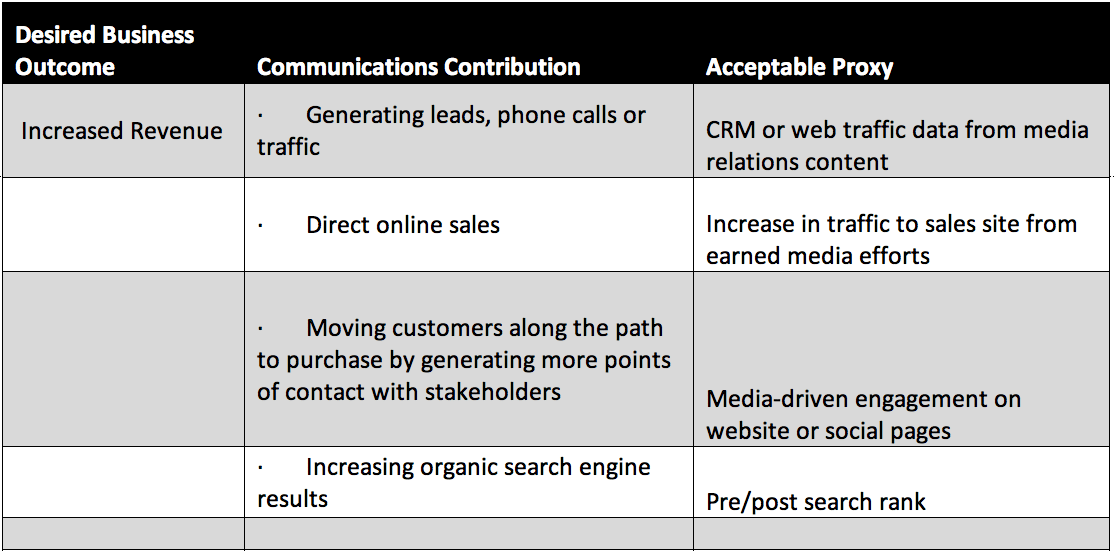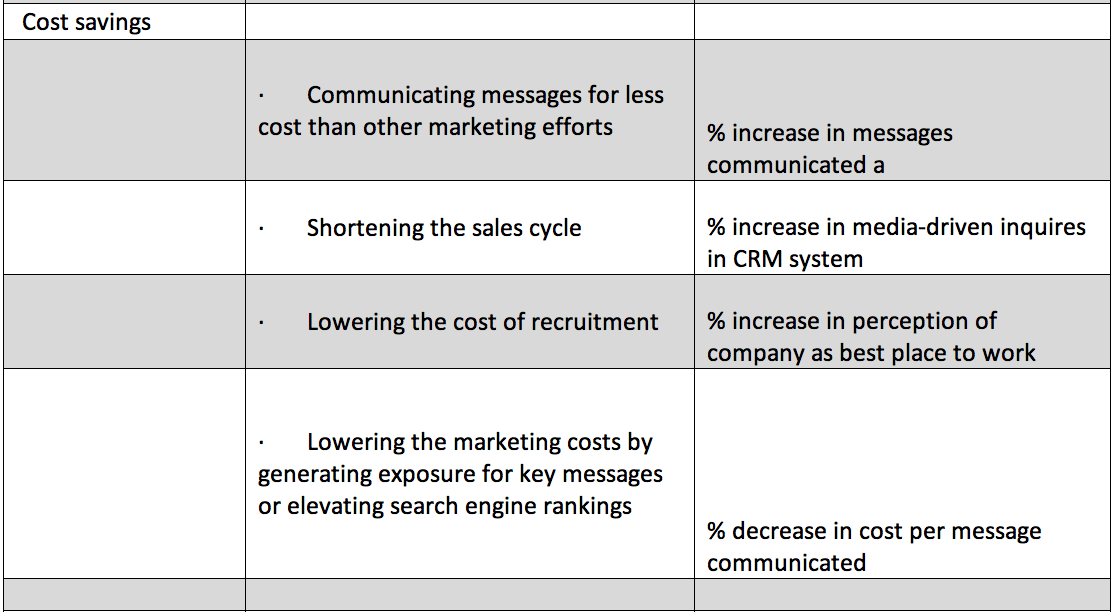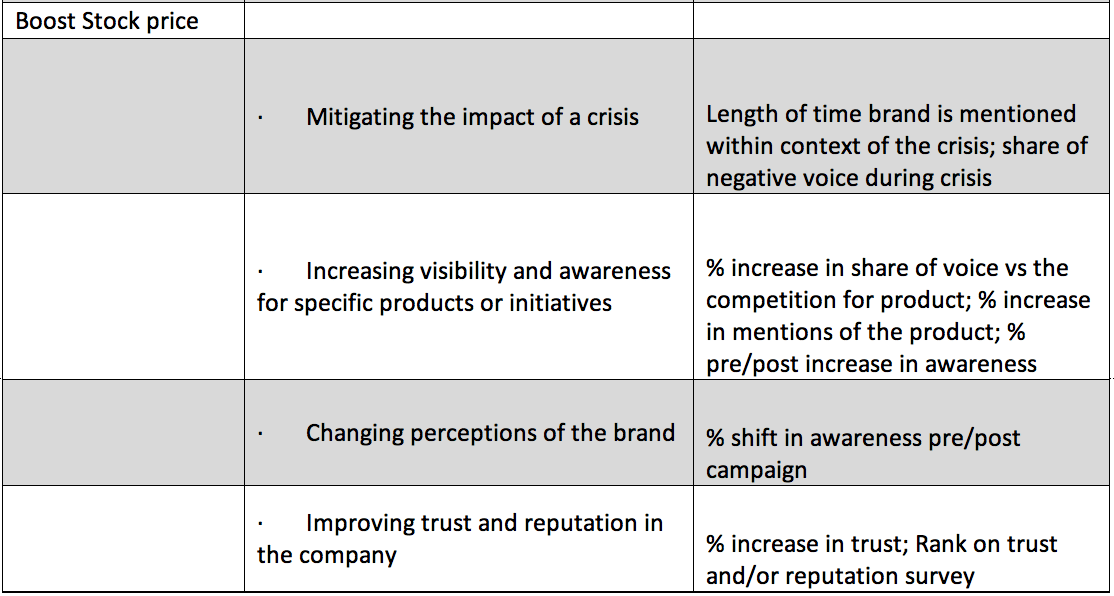Over the next few months, Katie Paine will be presenting a series titled “How do you measure success?” The Measurement Queen’s series, devoted to examining how PR measurement can be applied to various aspects of public relations to prove their impact, will appear exclusively on the Agility PR Solutions blog.
This is the second piece in the series.
You can’t measure anything without a clear definition of the business goals and objectives for whatever it is that you are measuring.
This is perennially problematic for media relations because the most frequently cited goal is typically “placements,” which are never an end in themselves. The purpose of generating a placement, whether in a local paper or the Wall Street Journal, must be a business outcome—why else would anyone fund the effort?
Fundamentally, there are three business outcomes that senior leadership cares about:
- Increased Revenue
- Cost savings
- Stock price (for public companies)
Media relations contributes to those business outcomes in many ways. It can generate revenue through:
- Generating leads, phone calls, or traffic
- Direct online sales
- Moving customers along the path to purchase by generating more points of contact with stakeholders
- Increasing organic search engine results
It can save money by:
- Communicating messages for less cost than other marketing efforts
- Shortening the sales cycle
- Lowering the cost of recruitment
- Lowering the marketing costs by generating exposure for key messages or elevating search engine rankings
It can impact stock price by:
- Mitigating the impact of a crisis
- Increasing visibility and awareness for specific products or initiatives
- Changing perceptions of the brand
- Improving trust and reputation in the company
The first step is to sit down with senior leadership and get agreement on which of those objectives you’re expected to achieve
Once you have agreement from leadership on the objectives, the next step is to define acceptable proxies for each of them. For example, an acceptable proxy for sales leads might be traffic to a specific webpage such as a whitepaper landing page or a “Contact Us” page. You just need to make sure that either the page or the activity is tagged for media relations so that it gets attributed to your efforts.
If the objective is changing perceptions, what you need to measure is the percentage of people whose perception changed. However, an acceptable proxy might be an increase in discussion of the new positioning in the media, or increased share of voice vs. the competition around an issue.
If the objective is awareness, again, the ultimate metric is the number of people who are now aware vs. those who were before you started the campaign. However, a proxy that may be acceptable could be increased engagement with our brand in social media
The key is to make sure you get buy-in from leadership for whatever proxy you use
Many media relations campaigns are designed to communicate key messages. To truly show that you have communicated a key message you will need to survey the stakeholders to ensure that they believed that message. However, if you analyze your media coverage, an acceptable proxy might be “percent increase in media items that contain one or more key messages.”
If you want to evaluate your efficiency, you can take all the media items that contain a key message and divide the cost of the campaign by the number of messages communicated. Then you can compare the media relations effort to other efforts like events or paid social media.
If your goal is to mitigate negative exposure during a crisis, media relations can be evaluated in several ways
The best way is to track the messages being communicated in articles about the crisis to evaluate whether your desirable messages are outweighing the undesirable ones. If there is a chance that an industry crisis will spillover onto your brand, you should look at all mentions of the crisis to analyze what share of that crisis coverage is hitting your brand. If nothing else, look at the number of media items the first day and see if the overall number declines day by day and even hour by hour. If it doesn’t, you probably need to change your strategy.
We’ve summarized these tips in the following table:
The point is that there are many ways to measure media relations; the key is to match the metric to your business goals.
For more tips, check out my course on Measurement 101 and our other “How To” posts here.







